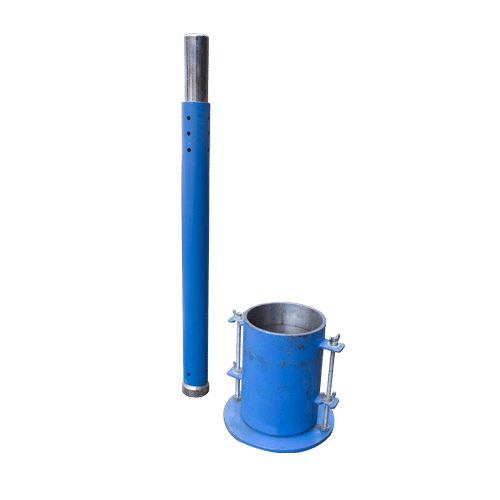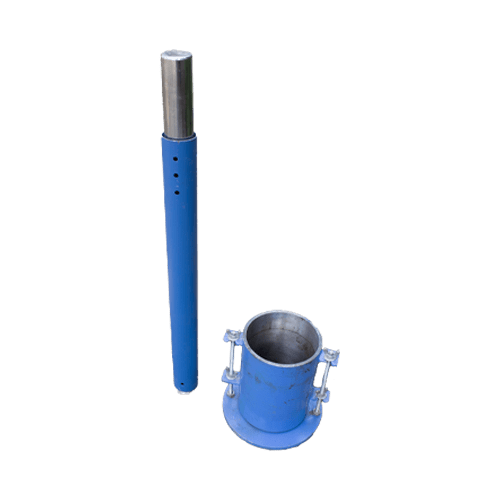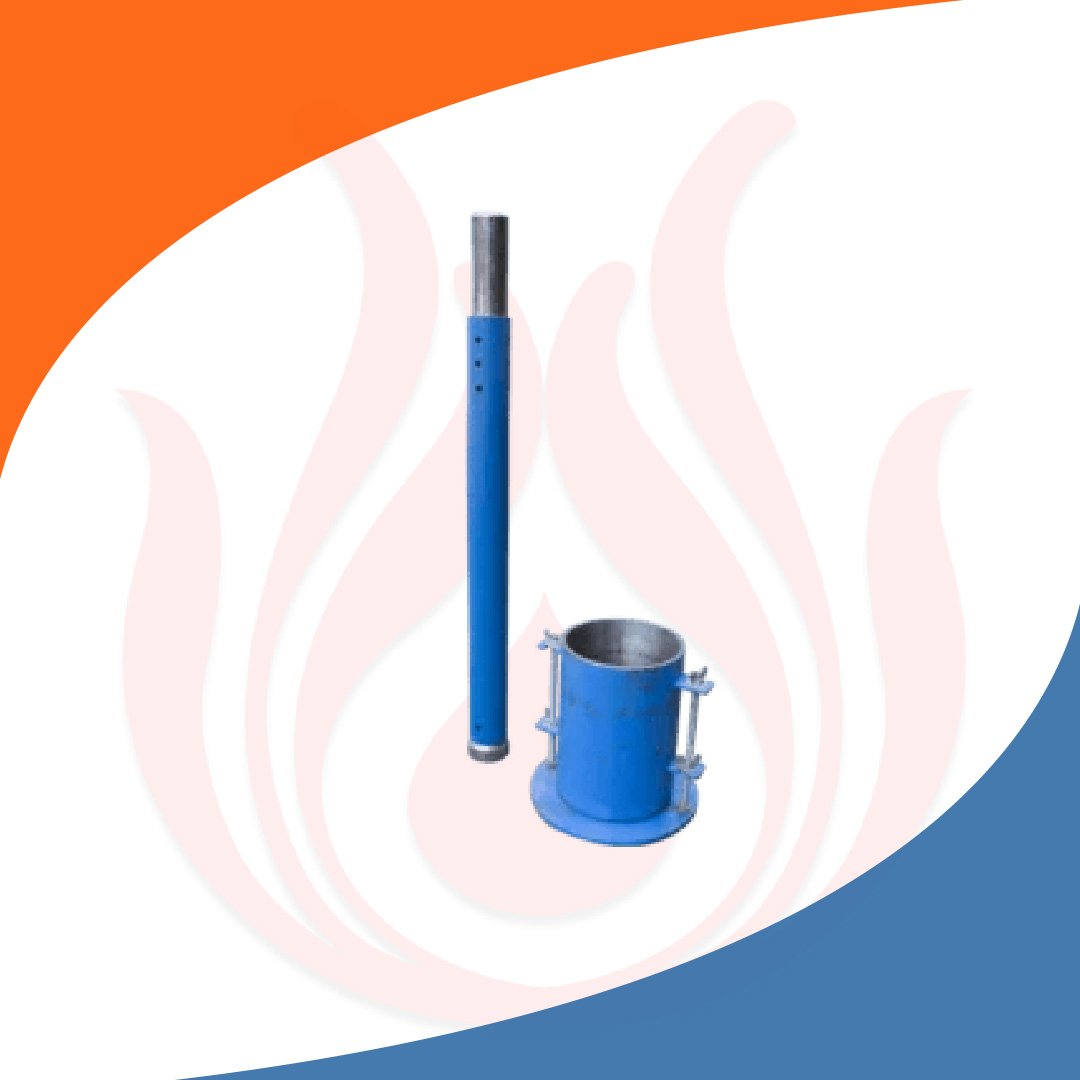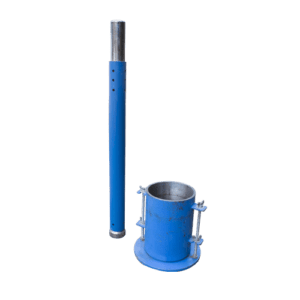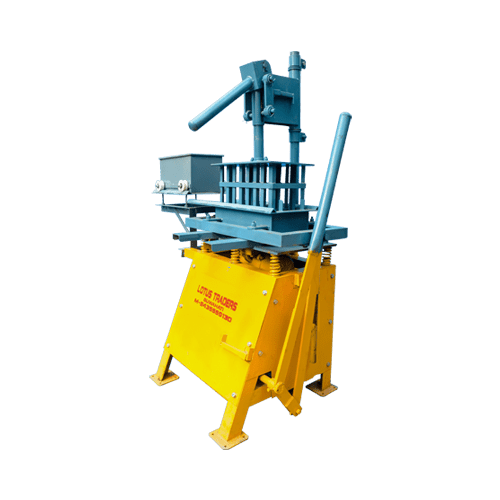Standard Compaction Test
- High Quality Materials
- Compliance With Standards
- Clear Product Information
- Warranty & Support
- Product Testing & Certification
- Delivery & Policy
- Ask a Question
- Estimated Delivery: 5 Days – 10 Days
- DESCRIPTION
FEATURE | SPECIFICATION |
Face of the rammer | 2″ |
Controlled fall | 12″ |
Weight | 2.5 kgs |
Dimensions | 101.6mm I.D. x 116.4mm height x 944 cc.volume |
Information About Standard Compaction Testing:
Standard compaction test
INTRODUCTION
A standard test for the compacting of soils, otherwise known as the Proctor Test is an accepted procedure used to determine optimum moisture content and maximum dry density. Designed by ASTM D698 or AASHTO T99 guidelines, this test is conducted on a soil sample using standard mould with energy level specified. The process involves different moisture contents to determine the behaviour of soil compaction.
The derived compaction curve provides engineers with the necessary basis for identifying a desirable moisture content that will ensure maximum density, which is vital in foundation construction embankment as well road building. The Standard Compaction Test is crucial in guaranteeing the stability and loading characteristics of engineered structures on soil foundations.
KEY FEATURES
Preparation: Secure that the soil sample taken is a representative one and free of organic matter.
Apparatus Setup: Apply a typical compact mould, an impact rammer and a compaction pedestal.
Moisture Content: First, calculate the initial moisture content of a soil sample.
Layer Thickness: Lay soil in the mould by layers and tamp down each layer with a specific number of blows.
Compaction Energy: Use impact energy with a regular compaction hammer or vibrating hammer.
Number of Blows: Compress each layer by a designated number of strikes (typically 25 blows for the standard Proctor test and 56 beats on modified thereof).
Density Measurement: Evaluate the densified dry density of soil specimen.
Repeat Tests: Perform more than one test with different moisture contents to determine the optimum required level of moisture content and highest dry density.
Data Analysis: Determine the Proctor compaction curve through a plot of dry density vs. moisture content curve.
Results Interpretation: Determine the highest dry density and associated optimum moisture content for given compaction energy.
UNDERSTANDING THE WORKING PROCEDURE
A standard compaction test measures the maximum dry density and optimum moisture content of a soil specimen, which is critical in construction.
Here’s how it works:
Sample Preparation: Take a representative soil sample and air-dry it. Granulate large particles to create uniformity.
Compaction: Put the soil in a mould, and compact every layer with X blows from compaction hammer.
Measurements: Measure the wet weight, volume and moisture of compacted soil. Calculation: Calculate the dry density and moisture content for every compaction trial.
Plotting: Plot a compaction curve in the form of dry density versus moisture content. The peak point on the curve signifies best moisture and greatest density. This test enables engineers to improve soil compaction for stability and load-bearing capacity in construction sites.
USAGE AND APPLICATION
The Proctor test method is a standard compacted test that measures the maximum dry density and optimum moisture content of soil. This information is important when constructing and evaluating the compaction of building materials such as embankments, roads and foundations. The results are further used by engineers to find the best water content for achieving maximum compaction under stable and durable structures.
By comparing field compaction to the standard Proctor curve, construction workers can manage moisture levels during compacting procedure in order for maximum soil density. Basically, the standard compaction test plays a role in quality control supporting engineers throughout construction projects to make right decisions based on this and ensure longevity of engineered structures.
ADVANTAGE AND BENEFIT
The typical compaction test is an essential geotechnical operation applied to determine soil properties in construction projects. Its main benefit is the reliable assessment of soil compaction characteristics, enabling proper density and stability.
This test helps to establish the optimum moisture level at which a given soil reaches maximum compaction, critical in designing foundations, roads and embankments. Advantages include more load-bearing strength and less settlement, increasing the performance and durability of construction.
Furthermore, the test allows engineers to improve construction materials and methods so they avoid problems such as uneven settling or structural failure. In conclusion, the standard compaction testing technology is important in achieving optimum soil compaction and ensuring a strong structure in civil engineering projects.
CONCLUSION
Soil compaction characteristics are evaluated using the Standard Compaction Test, also referred to as the Proctor test. In summary, this test shows the importance of moisture content in relation to dry density for a soil sample. The relationship between the degree of compaction and moisture content is graphically presented by way of a compaction curve generated during testing, indicating an optimal level at which full expanse leads to maximum compactness.
The test uses a soil sample that is compacted under different moisture conditions by using standard compaction equipment. The curve obtained normally shows a maximum, which represents the moisture content that yields optimum dry density. This optimal moisture content means that below or above this level, the dry density decreases because of insufficient water causing an improper particle arrangement.
Results from this test are used by engineers and other geotechnical professionals to assess the ability of a soil for construction project. With the determination of maximum dry density and associated optimal moisture content, they may then optimize their compaction activities on construction sites to achieve steady and strong bases. In the final analysis, Standard Compaction Test is an essential part of maintaining structures to avoid settlement problems.
The Proctor test, which is also known as the Standard Compaction Test, includes an evaluation of soil compaction properties for construction works.
It is used to assess maximum dry density and optimum moisture content of soil, which are important in designing foundations, embankments.
Compaction of soil samples is carried out in a mould with an established level of energy. The generated density and moisture content are significant parameters.
It is the peak that can be reached within a certain set of conditions.
It means the optimum moisture content at which maximum compaction is achieved with regard to construction quality.
Absolutely, Proctor test variations are soil dependent
The engineers select the ideal moisture that they want to use in construction using this compaction curve so as to achieve an optimal soil compactness.
It might not reflect actual field conditions, and additional tests can be required for certain project needs.



